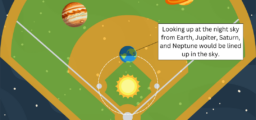SVO to finish its 2023 series of Monthly Star Parties during Geminids Meteor Shower!
Wednesday, December 13, 2023, is a special night for stargazing. That’s because its the best night to observe the Geminids Meteor Shower!
Kanab’s nonprofit Stellar Vista Observatory will facilitate a memorable night sky experience by hosting our last free monthly public star party in our 2023 series from 7:00 pm to 9:30 pm. During that time, the constellation of Gemini (the twins) will rise above the eastern horizon to an altitude of nearly 30 degrees. You’ll find our amateur astronomers with telescopes set up for your night sky enjoyment at the Jackson Flat Reservoir boat launch parking area.
With the waxing crescent moon just one day old, 3% illuminated and setting in the west by 5:30 pm, expect the sky overhead to be superbly dark. If conditions are clear, Geminid meteors, our Milky Way Galaxy, and other delights of the deep sky should shine spectacularly!
At its noontime peak on the following day, this shower is expected to produce as many as 120 meteors per hour. But the night before, we won’t see that many and here’s why.
According to Dominic Ford, editor and founder of In-The-Sky.org, a free public information service using data from NASA’s Jet Propulsion Laboratory in Caifornia, “The zenithal hourly rate (ZHR) of a meteor shower is a measure of the rate at which it produces meteors, expressed as the number of meteors seen per hour. In practice, the number of meteors actually seen will be significantly less than the ZHR….“The observed number will depend on many factors, including sky conditions, the degree of light pollution in the observer’s neighborhood, and the altitude of the meteor shower’s radiant in the night sky.”
The best time for observing the Geminids is actually around 2:00 am in the morning, but most folks will be fast asleep by then. Why is that? Well, it has to do with the position of the “radiant”, the spot in the sky from which the meteors appear to emanate. This shower is known as the Geminids because the radiant is in the constellation of Gemini, which, by 2 am, will reach the highest point of its arc across the night sky. At that time, meteors would appear very frequently in short streaks, something like falling raindrops from a sprinkle passing directly overhead. But earlier in the evening, Geminid meteors should appear less often, but ideally produce long streaks of fire because of their low angle of incidence entering our atmosphere.
How does this happen, exactly?
Again, according to Ford, “Meteor showers arise when the Earth passes through streams of debris left behind in the wake of comets and asteroids. Over time, the pieces of grit-like debris in these streams distribute themselves along the length of the parent object’s orbit around the solar system. Shooting stars are seen whenever one of these pieces of debris collides with the Earth’s atmosphere, typically burning up at an altitude of around 70 to 100 km. To see the most meteors, the best place to look is not directly at the radiant itself, but at any dark patch of sky which is around 30–40° away from it.”
For weather related updates, visit StellarVistaObservatory.org. Dress warmly. Hope to see you there!






Comments are closed.